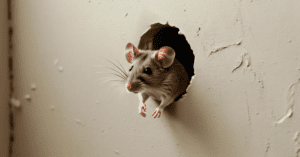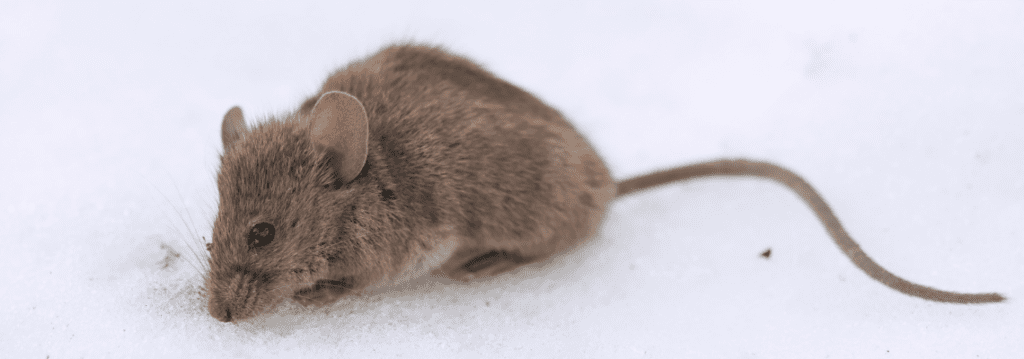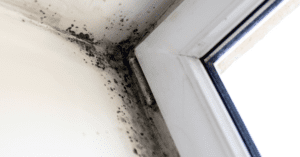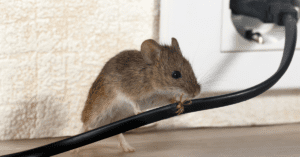

Got Mice in Your Walls? Here’s How to Deal with the Unwanted Guests
Get rid of mice in your walls! Learn how exterminators remove mice, seal holes, and eliminate pests fast. Say goodbye to your mice problem today!


Mice thrive in urban, suburban, and rural areas, often found in homes, garages, and buildings.
Mice are omnivorous, eating grains, fruits, vegetables, insects, and household items, contaminating more than consuming.
Mice reproduce rapidly, with females producing several litters yearly, reaching maturity in 6-8 weeks.
In Canada, the most common types of mice are house mice (Mus musculus) and deer mice (Peromyscus maniculatus). House mice are typically found in urban and suburban areas, while deer mice are more prevalent in rural and forested regions. These mice are known for their adaptability and can thrive in a variety of environments, making them significant pests in both homes and agricultural settings.
Mice can cause numerous problems, including contaminating food supplies with their droppings, urine, and saliva, which can transmit diseases such as hantavirus and salmonella. They also chew on electrical wiring, insulation, and structural components, leading to potential fire hazards and costly repairs. Mice can spread parasites like fleas and mites, and their presence often results in significant psychological distress and hygiene concerns.
Mice in Canada typically measure 150 mm to 170 mm in length, including their tails. House mice are usually grey or brown with lighter underbellies and have large ears relative to their body size. Deer mice have brown or grey coats with white bellies and tail bottoms. The tail of a house mouse is about the same length as its body, whereas the tail of a deer mouse is shorter and bi-colored.
Mice pose significant health and safety risks due to their potential to spread diseases and cause structural damage. Their infestations can lead to contaminated food supplies, fire hazards from chewed wiring, and psychological distress. Preventive measures, such as sealing entry points and maintaining cleanliness, are crucial. If an infestation is suspected, prompt action and possibly professional pest control are necessary to mitigate damage and eliminate the problem effectively.
Mice invade homes seeking food, water, and shelter, especially as temperatures drop in winter. They enter through cracks, gaps, and openings around the building. Homes with easily accessible food sources, such as improperly stored groceries and pet food, attract mice. Cluttered areas, poor sanitation, and inadequate sealing of entry points contribute to infestations, providing ideal conditions for mice to thrive and reproduce.
Preventing mice involves sealing cracks and gaps around windows, doors, and foundations. Keep food in airtight containers and regularly clean up spills and crumbs. Reduce clutter to eliminate hiding spots and use traps and bait stations to monitor and control populations. Trim vegetation around the building exterior and ensure trash cans are tightly covered. Regular inspections and maintenance are essential to identify and address potential entry points and signs of mice.
Pestcheck’s mice inspection involves a meticulous search throughout your home, especially in basements, attics, and kitchens. Our experts document all signs of mice activity, from droppings to nesting sites. This comprehensive assessment helps us fully understand the infestation, allowing us to develop a precise, targeted treatment plan to eliminate mice and safeguard your property against future invasions.
Pestcheck’s mice control approach combines eco-friendly methods, including traps and exclusion techniques, to target both visible and hidden mice. We address key infestation sites and potential entry points to ensure thorough eradication. This comprehensive method not only removes current mice but also establishes long-term barriers to prevent future invasions, maintaining a safe, mice-free environment in your home.
Pestcheck’s follow-up services involve regular inspections to ensure the effectiveness of our mice control measures. We continuously monitor for signs of new activity and reinforce protective barriers as needed. By adapting our methods to seasonal changes and ongoing threats, we ensure your home remains mice-free year-round, providing lasting protection, peace of mind, and a secure living space.
This question is the most popular FAQ: Rats question.
Mice are much smaller than rats. Mice are about 2 to 3 1/2 inches in length – plus another 3 to 4 inches of tail. The most common rats in Canada are the Norway rat and the roof rat. They will be about 14 to 16 inches in length.
Mice most prefer to eat cereal grains and plants, but they will feed on almost anything.
It is very likely that you have found a mouse nest. A mouse will build its nest from about any soft material or finely shredded paper. And the little black “rice” is most likely mouse droppings. Many mice come in along the plumbing pipes, so they will use toilet paper under your bathroom sink for their nest.
If you suspect your pet has eaten a dead mouse or rat, you should contact your local vet. It is possible the rodent has ingested poison which has been passed onto your pet through secondary poisoning.
If you know the rodent was poisoned, contact your pest control company and get the name and PCP registration number of the rodenticide. This information should be passed onto your vet.
In most cases secondary poisoning is not going to be a problem unless your pet eats many poisoned rodents.
Bait stations are the ideal device to add safety to rodent control. They are extremely durable, tamper resistant and can even be anchored to ensure they will not be picked up or moved. The bait stations are normally used around the exterior of your home. As an alternative, the rodenticide can be replaced with snap traps hidden inside the bait station.
Snap traps, glue boards and RTUs (Ready to Use stations) are extremely effective when used inside your home. Rodenticide is not used.
Mice are active at night and also during the dawn and twilight hours. Because they move around in the dark, their eyesight isn’t that great. Instead, they rely on their highly developed sense of smell to navigate and find food. If you eliminate their food source, you’ll help curb your mouse problem. Keeping your home neat and tidy will go a long way to reducing hiding areas and food sources.
First the technician will carry out an inspection of your home. He will determine the type of rodent, the level of activity and how they are getting in your home. He then strategically places traps or glue boards to treat the infestation. Any entry points will be closed.
Two addition services are required. On the final visit, he will remove all devices.
Check out our blogs and articles to learn more about keeping your home pest-free and your family and pets safe! We’re sharing our expert advice and latest news from behind-the-scenes.


Get rid of mice in your walls! Learn how exterminators remove mice, seal holes, and eliminate pests fast. Say goodbye to your mice problem today!


Discover the hidden link between pests and mold in homes. Learn how they coexist and how to prevent these health hazards effectively.


Protect your property from rodents chewing on electrical wiring. Discover risks, signs, and effective prevention tips.


In the food service industry, maintaining high standards of hygiene and food safety is paramount to ensuring customer satisfaction and preventing health risks. However, one significant challenge that establishments face


As our loved ones transition into their golden years, our foremost concern revolves around ensuring their health and comfort. Yet, within the nurturing ambiance of senior living spaces, an often-overlooked


WINTER STORAGE TIPS FOR RVs TO KEEP MICE AWAY Since winter is often the time when mice enter a Recreational Vehicle, making some changes to your storage routine can help


HOW DO MICE GET INTO RVs? Mouse infestations often occur while your RV is in storage for the winter. For several months of the year, the camper is empty without


HOW TO TELL IF YOU HAVE A MOUSE INFESTATION How do you know when mice have made your RV their home?Here are some signs that indicate a mouse or rodent


In the life of the modern homeowner, the possibility of a pest emergency is a crisis that often goes overlooked. Pests such as rodents, insects, and various other critters can
Mon: 9am to 5pm
Tue: 9am to 5pm
Wed: 9am to 5pm
Thu: 9am to 5pm
Fri: 9am to 5pm
Sat: 9am to 12pm
Sun: Closed
Stat Holiday: Closed
2381 Marine Drive,
West Vancouver, BC, V7V 1K9
#220 – 145 Chadwick Ct,
North Vancouver, BC, V7M 3K1
+1 (778) 909 1318